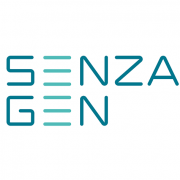SenzaGen is presenting at hosted sessions at Society of Toxicology 56th Annual Meeting in Baltimore March 12-16, 2017
Lund University Scientist Andy Forreryd and SenzaGen CEO Anki Malmborg Hager will give a presentatios about the GARD assay at exhibitor hosted sessions at the Society of Toxicology 56th Annual Meeting in Baltimore, on the 13th and 14th of March.
The meeting promises more than 150 scientific sessions, approximately 350 ToxExpo exhibitors offering you the latest information on services and technology, thousands of abstract presentations, continuing education courses, awards presentations, receptions, career guidance and support, and more.
Presentations details
– Replacement of Animal Testing for CLP/GHS Classification of Skin Sensitizers is now possible using a Modified Genomic GARDskin [OECD TGP 4.106] Assay
SenzaGen presents the latest development towards reliable potency classification of chemicals according to CLP 1A and 1B, taking both LLNA and Human potency data in consideration. The assay is based on GARDskin and utilizes a refined gene expression signature developed specifically for potency categorization with high predictability.
Date: 3/13 Time: 13:30 -14:30 Room: 338
– Advantages with Genome Testing Opening up the Landscape for New Application Possibilities for Sensitization Testing using SenzaGen’s Genomic GARD Assay
SenzaGen’s GARD assay is based on expression analysis of predictive genomic biomarker signatures. Prediction calls of test substances are generated by computational methods based on machine learning. SenzaGen presents their experience in skin and respiratory sensitization testing, working with challenging compounds and mixtures, active substances, potency classification and NOEL interpretation.
Date: 3/14 Time: 13:30-14:30 Room: 338
These session are Exhibitor-Hosted Session. Although not an official part of the SOT Annual Meeting scientific program, its presentation is permitted by the Society.
Attendees are welcomed from researcher community, industry, manufacturers, regulatory agencies, consultants, CROs and every one interested in safety testing of chemical compounds.







